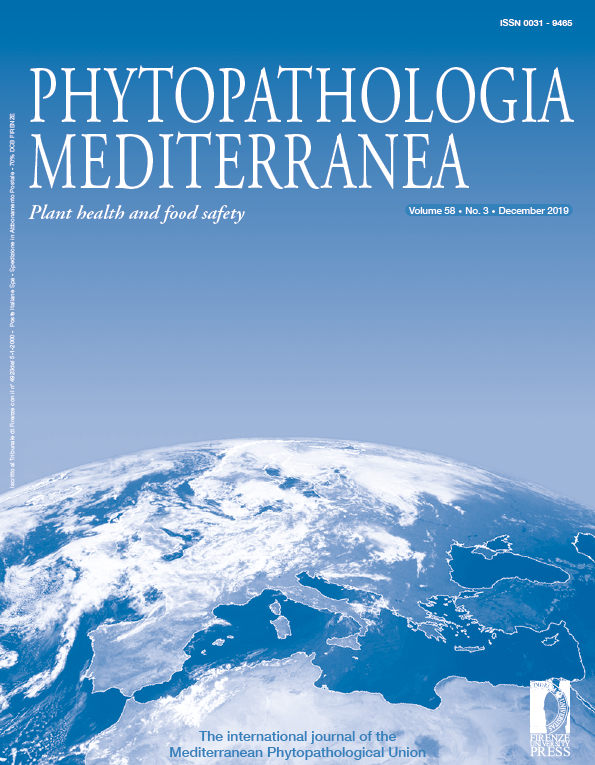Published 2019-12-30
Keywords
- Fungicide resistance,
- oomycete,
- plant pathogen,
- mefenoxam
How to Cite
Abstract
Pod rot of lima bean (Phaseolus lunatus L.), caused by the broad host range oomycete Phytophthora capsici, is an emerging threat to lima bean production in the mid-Atlantic region of the United States of America (USA). There is little known about survival and spread of this pathogen in the State of Delaware, an area of major lima bean production. Irrigation water was sampled in 2014 and 2015 for the presence of P. capsici using baiting methods. Over three seasons, isolations from water sources, weeds, and soil samples did not yield P. capsici. However, field samples from symptomatic lima bean, watermelon, muskmelon, pepper, pickling cucumber, and pumpkin yielded 64 P. capsici isolates. Characterization of the isolates showed that 42 were of the A2 mating type, 31 were sensitive to mefenoxam, 18 were intermediately sensitive, and four were insensitive to this fungicide. All isolates were pathogenic on the eight lima bean and two snap bean cultivars tested. Three EST-SSR markers, PCSSR19, PCN3, and PCN7, used in combinations of PCSSR19/PCN3 or PCSSR19/PCN7 were significantly associated with mefenoxam sensitivity. This study is the first of its kind in Delaware, providing key information as a basis for effective management of P. capsici, including mating type, mefenoxam insensitivity, host range, and survival.






